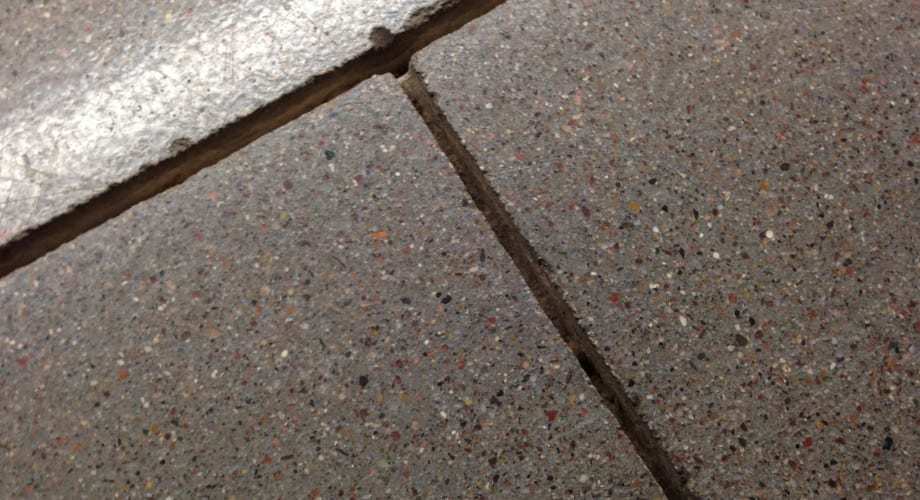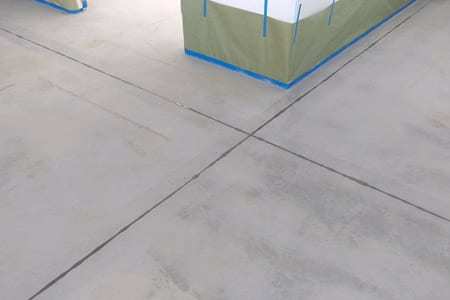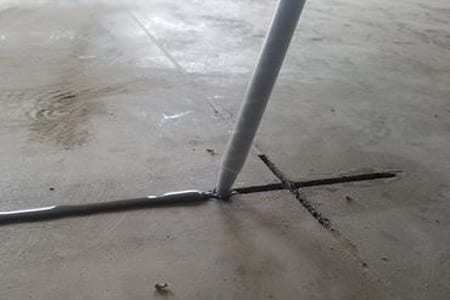Expansion Joint Filler
Control joint repair is important because concrete slabs will naturally expand and contract over time due to various factors, including changes in temperature and humidity. When a concrete slab is laid, expansion joints or control joints allow sections that are subject to these conditions or heavy loads to flex instead of cracking. Joint filler repair and control joint filling protects the leading edge of a control joint and enables these areas to successfully support the excessive weight from heavy equipment or machinery. The specialists at AllStar can help you select a joint system designed specifically for your space’s intended use and install it so that you can protect the structural integrity of your surface, prevent damage to equipment and avoid accidents.
Schedule ConsultationBenefits of Choosing AllStar
Joint Filler Specialists
- Access to proven experts in control joint stabilization, expansion joint protection, and joint rebuilding to correct any issues during the initial control joint filling process and create a foundation for improved productivity and increased surface service life.
- Technologically-advanced approaches to both common and uncommon concrete joint filler challenges.
- Regular communication about your project to minimize downtime and keep you informed.
- High-quality work performed by trained, knowledgeable specialists who pay attention to the details.
- Comprehensive knowledge about virtually any type of concrete repair or enhancement available to provide you with a “one-stop-shop” when it comes to concrete floor surfaces.

Control Joint Filling We Offer
Concrete joint damage is a widespread problem, particularly along a slab’s edges. Joints can often be the first place where you can see signs of wear and tear. What can begin as a cosmetic problem can turn into a bigger headache if ignored. Control joint problems contribute to surfaces deteriorating more quickly, the risk of damage to vehicles and equipment, and eventual surface spalling. In severe cases, the failure to properly treat or maintain control joints can require a structural rebuild, which is much more expensive than taking a proactive approach.
The different types of joints AllStar’s experts typically work on include control joints, expansion joints, shrinkage joints, construction joints, and isolation joints. The most common reason we see joint damage is when joints are left unfilled. Sometimes, inexperienced contractors use saw cuts on some concrete surfaces instead of a contraction joint. Often, the cause of the problem dictates the appropriate expansion joint filler.
Two primary types of control joint failure are:
When the concrete surface starts to crack and chip on joint lines as slabs become uneven. This type of control joint failure will eventually result in the surface becoming a safety and health risk, especially as dirt and debris collect in the joint, encouraging the growth of bacteria.
As your concrete surface deteriorates, your epoxy floor coatings can become chipped and cracked. This can happen when the contractor who applied your epoxy flooring over control joints instead of properly treating this part of your surface. Since these control joints are created to allow for expansion and contraction of your concrete, improper coating installation can create a fault line in your surface as the rigid epoxy snaps. These imperfections grow over time as your surface sees more foot and vehicle traffic.
AllStar has developed expertise in resolving problems our customers have had which have required concrete joint repair and expansion joint filling in the following types of settings:
- Warehouse Flooring
- Freezer and cooler storage
- Distribution centers
- Factories
- Federal facilities
- Retail locations
- Industrial Manufacturing plants
- Parking lots, garages, and driveways
- Walls
To the untrained eye, a joint problem could seem like a small problem. Why is control joint filling important? Here are just a few of the benefits our customers have seen who have taken advantage of these services:
- Increased productivity
- Improved performance
- Extended surface service life
- Safer work environment
- Easier cleaning and maintenance
- Stronger surface
- Fewer accidents
- Reduced damage to equipment and machinery


How Joint Filling Works
Want to learn more about whether concrete joint filler would help address ongoing concerns you have about the condition of your surfaces? Fill out our Schedule Free Consultation form or just give us a call to see what our experts have to say.
Once we have the opportunity to ask you some questions to learn more about your space and the issues you are having, our experts can create a recommended plan of action. You’ll then have time to review our free, no-obligation estimate.
After we get your approval, we can then touch base about a schedule so that we can choose from the joint filler colors best suited for your project, then reserve all the equipment and installers that you will need.
Typically, these joint repair and filling projects consist of the following steps:
- Grinding the joints to remove deteriorating concrete, old coatings, and other debris.
- Rebuild joints, using an epoxy mortar to create a smooth, level new surface.
- Re-cutting the control joint when the mortar is completely dry.
- Applying flexible polyurethane (elastomeric) control joint filler to allow for future movement. We take care to install the filler flush with the slab so that the edges aren’t left open.
- Optional to reseal any surrounding repaired concrete.
Our project foreman will supervise the crew, provide you with updates, and be your contact throughout the duration of the work. Your foreman will be responsible for getting all the needed equipment and installers on-site, and for making sure generators are available if needed, if you need an additional power supply.
Once the sealers have been allowed to dry, we will be in touch to schedule a walk-through so that we can relay any needed information to you about what we did and to provide you with guidance on needed maintenance, upkeep, and cleaning best practices going forward.
Free Consultation
Ready to learn more about how AllStar can help you? Take advantage of our free consultation to get the ball rolling.
Get Started
